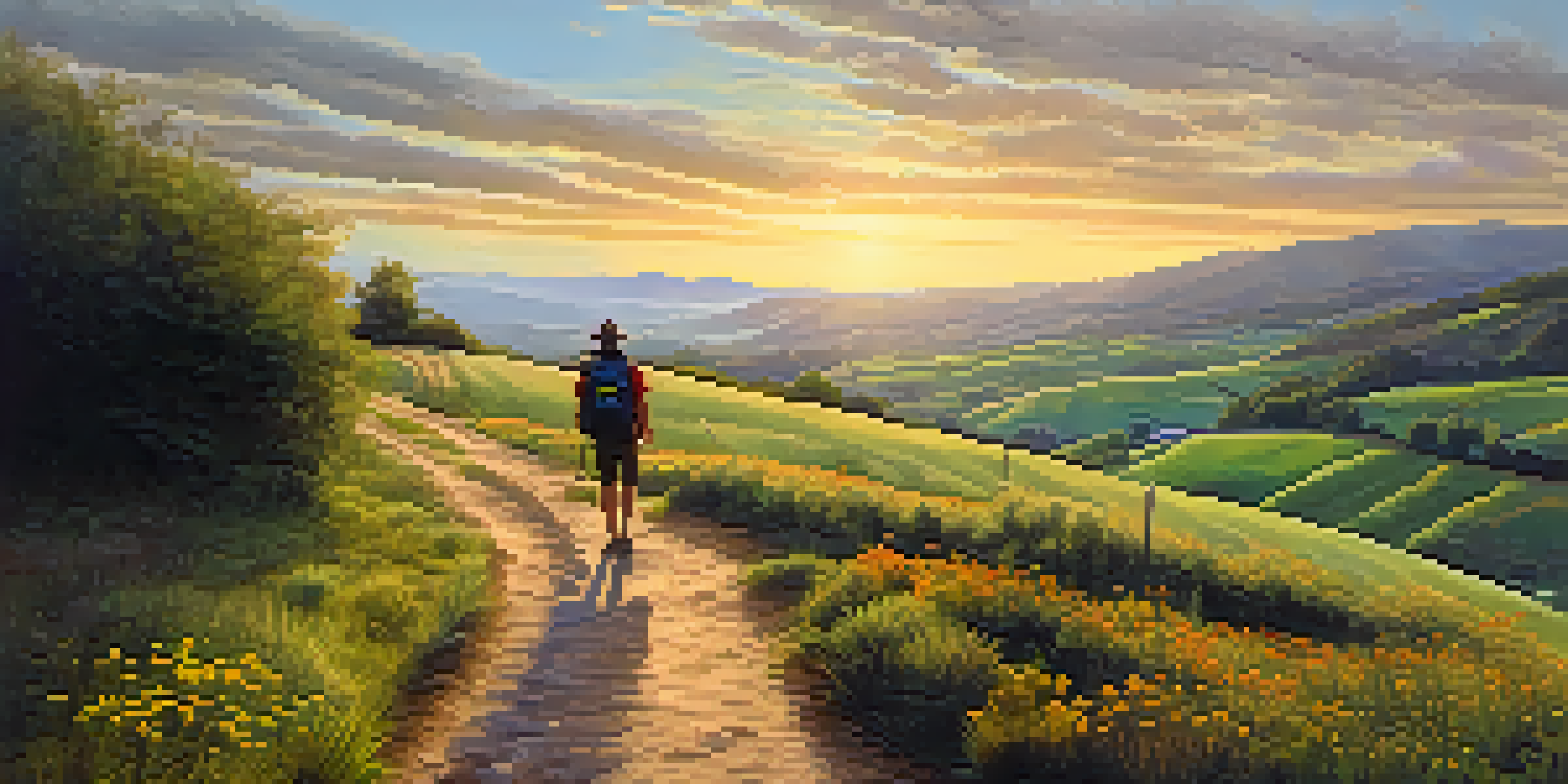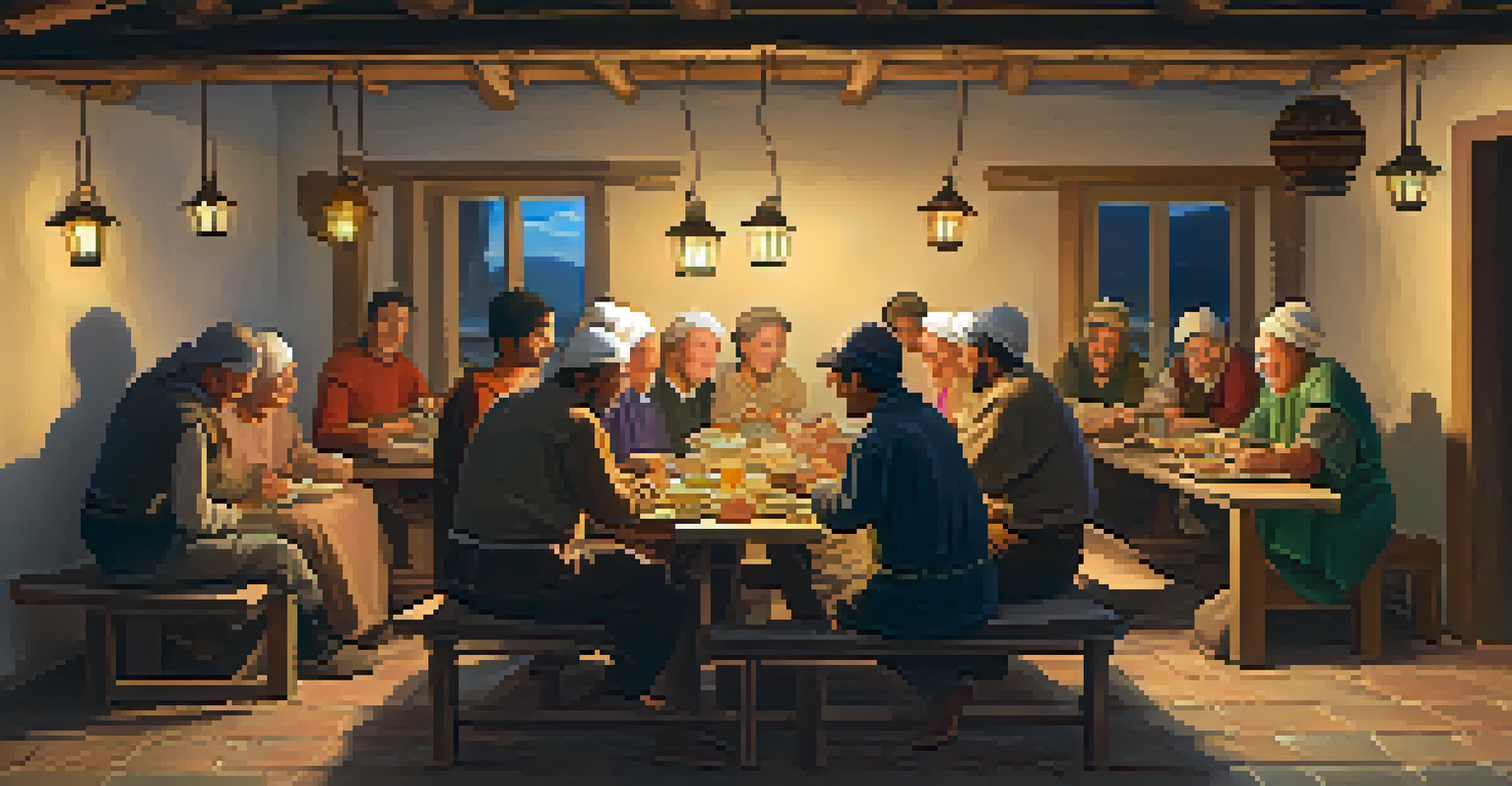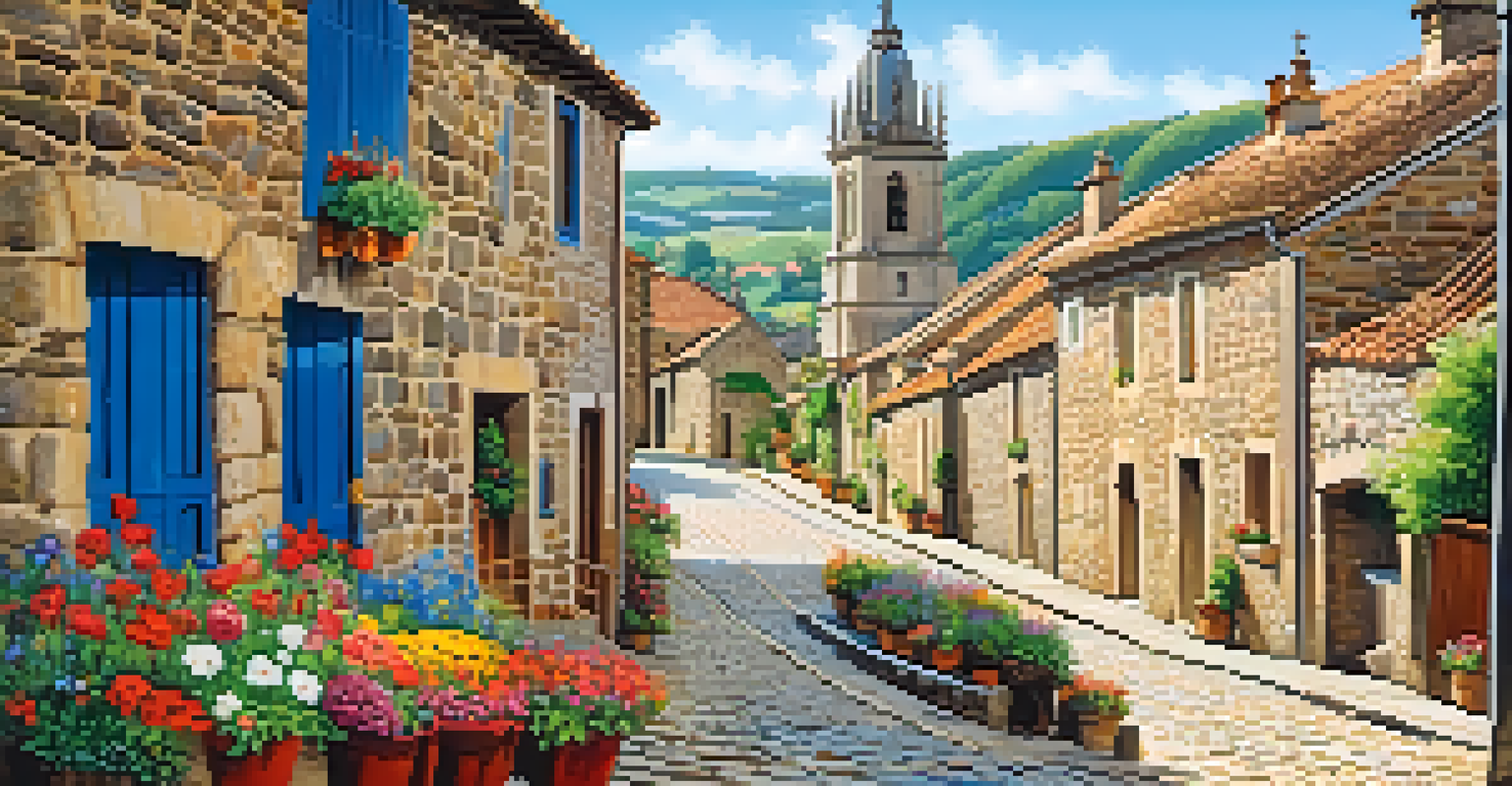The Pilgrimage Experience Along the Camino de Santiago

What is the Camino de Santiago and Its Significance?
The Camino de Santiago, or the Way of St. James, is a network of pilgrimage routes leading to the shrine of the apostle St. James in Santiago de Compostela, Spain. It's not just a walk; it's a journey steeped in history, faith, and personal discovery. Pilgrims from all over the world traverse these paths, each seeking their own purpose and meaning along the way.
The journey of a thousand miles begins with one step.
Historically, the Camino has been significant since the Middle Ages, serving as a spiritual path for Christians and a cultural exchange for travelers. It symbolizes a quest for enlightenment, healing, or simply a break from the routine of daily life. The pilgrimage has evolved, embracing people of all backgrounds, beliefs, and motivations.
Walking the Camino invites introspection and connection to both nature and fellow pilgrims. Whether you’re searching for spiritual fulfillment or a sense of adventure, the Camino offers a unique experience that resonates with everyone who walks its paths.
Preparing for Your Pilgrimage: What to Know
Preparation is key for a successful pilgrimage along the Camino de Santiago. One of the first steps is choosing which route to take, as there are several, each with its own landscapes and challenges. The most popular is the Camino Francés, stretching about 780 kilometers from Saint-Jean-Pied-de-Port in France to Santiago de Compostela.

Once you've decided on the route, it's essential to pack wisely. Comfortable footwear is a must, along with lightweight clothing and essential gear like a good backpack and a water bottle. Keep in mind, the journey isn’t a race; pacing yourself will make your experience more enjoyable and fulfilling.
Camino: A Journey of Discovery
The Camino de Santiago is a transformative pilgrimage that blends history, spirituality, and personal growth for travelers from all walks of life.
Additionally, consider your physical conditioning. While you don’t need to be an athlete, regular walking and some light training will help you build stamina. Preparing mentally for the emotional journey ahead is just as important as the physical aspect—embracing the unknown can lead to incredible personal growth.
The Daily Rhythm of Walking the Camino
Each day on the Camino follows a rhythm that many pilgrims come to cherish. The day often begins early, with the soft light of dawn illuminating the path ahead. As you embark on your daily journey, there’s a sense of camaraderie among fellow pilgrims, with shared smiles and greetings marking your progress.
Not all those who wander are lost.
Walking can be meditative; the sound of your footsteps and the rustle of nature create a personal soundtrack. Many find that the hours spent walking offer a beautiful opportunity to reflect on life, past experiences, and future aspirations. The quiet moments often lead to profound insights, making each step a part of a greater journey.
In the evenings, pilgrims gather in albergues (hostels) to share stories, meals, and laughter. These interactions often foster lasting friendships, reinforcing the idea that the Camino is not just a physical trek but a shared human experience, rich in connection and understanding.
Cultural Encounters Along the Camino
The Camino de Santiago is not just about the walk; it’s also an immersion in diverse cultures and traditions. As you traverse towns and villages, you’ll encounter unique architecture, local cuisines, and vibrant customs that reflect the rich heritage of the regions you pass through. Each stop along the way presents an opportunity to learn something new.
Local festivals and events often coincide with the pilgrimage season, allowing pilgrims to participate in celebrations that have been held for centuries. Whether it's tasting regional wines, attending a folk dance, or visiting historic churches, these cultural encounters enhance the overall pilgrimage experience.
Preparation Enhances Experience
Proper preparation, including route selection and physical conditioning, is crucial for enjoying the Camino and making the most of the journey.
These moments of cultural exchange enrich the journey, reminding us that the Camino is a tapestry woven from the threads of countless stories, each contributing to the larger narrative of this ancient pilgrimage.
The Spiritual Journey: Finding Meaning on the Camino
For many, the Camino de Santiago is deeply spiritual, offering a chance to reflect on personal beliefs and life’s purpose. As you walk, the serene landscapes and the rhythm of your footsteps can create a meditative state, allowing thoughts to flow freely. Many pilgrims find that this journey helps them connect with their spirituality, regardless of their religious background.
The act of walking itself can become a form of prayer or meditation. With every step, you might find clarity on questions that have been weighing on your mind or even feel a sense of guidance that transcends the physical journey. The Camino is often described as a path to healing, both physically and emotionally.
This spiritual journey is highly individual; some may seek forgiveness, while others look for gratitude or closure. The beauty of the Camino lies in its ability to support each pilgrim in their unique quest for meaning, making it a transformative experience.
Challenges and Triumphs: Overcoming Obstacles
Walking the Camino de Santiago is not without its challenges. From blisters and sore muscles to unpredictable weather, every pilgrim faces hurdles along the way. However, these challenges often become the defining moments of the journey, teaching resilience and perseverance.
Many pilgrims discover that overcoming physical discomfort can lead to a profound sense of achievement. Each small victory—whether reaching a hilltop or simply completing a day’s trek—reinforces the belief that you can conquer obstacles in both the journey and life itself.
Cultural Richness Along the Way
Walking the Camino offers rich cultural encounters, allowing pilgrims to experience local traditions, cuisine, and festivals throughout their journey.
Moreover, sharing these struggles with fellow pilgrims fosters a sense of community and support. The shared experience of facing and overcoming difficulties together strengthens bonds and creates lasting memories, reminding everyone that the Camino is about collective triumphs as much as personal ones.
Reflecting on the Journey: Lessons Learned
As you complete your pilgrimage along the Camino de Santiago, it’s essential to take time to reflect on the journey. The experiences, challenges, and connections made along the way often lead to valuable life lessons. Many pilgrims find themselves changed, carrying newfound perspectives into their everyday lives.
The lessons learned on the Camino can range from appreciating the simplicity of life to understanding the importance of community and support. This journey teaches you to embrace both the highs and lows, reinforcing the idea that every step you take is a part of a larger narrative.

Ultimately, reflecting on your pilgrimage can help solidify its impact. Whether it’s through journaling, sharing stories with friends, or simply contemplating your thoughts, these reflections can serve as a guide for your next adventures, both on the Camino and beyond.